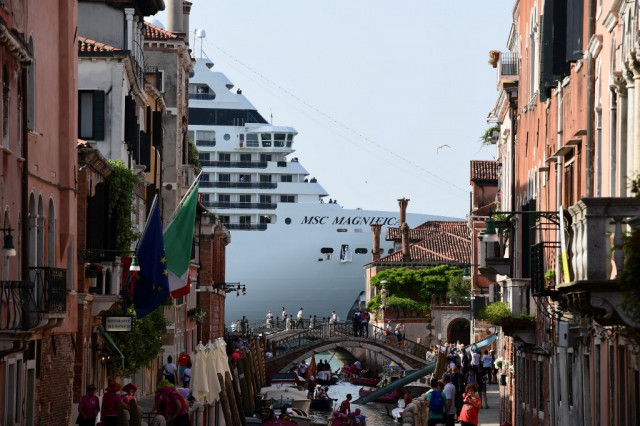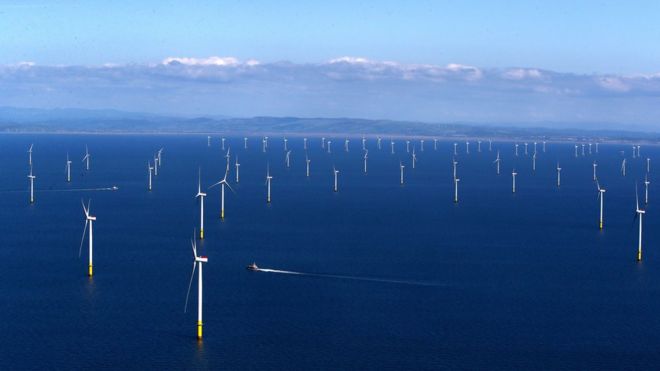COVID-19 leaves Venetian canals pristine: A beautiful illusion ?

Venetian canals run clear for the first time in 60 years
In April, the world was marvelling at the images of swans, dolphins, dense shoals of fish, jellyfish and even the occasional octopus, recolonising the Venetian canals, taking advantage of humankind retreating behind close doors. It seemed that there was a silver lining to the pandemic: As one observer noted, “What a marvel this Venice was. This virus brought something….beautiful.”
There were precious few reasons to be cheerful during the pandemic as the world went into lockdown, people fought for their lives in hospitals around the world and economies were paralysed but the sight of nature recolonising our empty cities was heart-warming. Wildlife needed only the smallest respite from humankind to re-establish itself.
Before the Coronavirus pandemic, Venice faced serious problems including flooding, unsustainable over-tourism, the sinking of historical buildings into the water and a dwindling population.
Now, this crisis is prompting authorities in the Italian port to reconsider its mass-tourism model.
Up to 30 million people visited in 2018. Now, like so many other places, the city is deserted.
“We’ve gone from one extreme to the other,” explained Matteo Secchi of the Venessia Association. “Here, a few months ago, we couldn’t even pass each other. Now the streets are empty.”
The clear water running through the canals teeming with wildlife and the empty monuments and plazas have a tranquil and intense beauty nowadays – but that comes at a very high cost for the city’s economy and especially, for those who make their money from tourism.
A golden opportunity for change:
With colossal numbers of tourists passing through Venice every year, there is a strong movement of Venetians wanting to claim back their city.
They have been long overwhelmed by visitors, many of whom arrived on vast cruise liners. Now, according to the city’s deputy mayor Simone Venturini, it could be time to consider a softer model, even if it means physically limiting the number of visitors.

A cruise ship overshadows a Venetian canal
“This will be an opportunity to move towards intelligent tourism. With tourists who take the time to understand and get away from the frenetic tours of other times.”
Perhaps the next move should be a complete ban on cruise liners within the the lagoon.
In 2019, the Italian government announced that it would consider rerouting cruise ships away from central parts of Venice and require them to dock at the Fusina and Lombardia terminals away from the city centre but still within the lagoon.
But the idea remained just that… a proposal tabled during a transport committee meeting and until now, has not been acted upon.
It was sparked by a terrifying incident earlier in the year, when a 13-deck cruise ship crashed into a wharf in the city, sending tourists running for their lives
“I’m still as worried as I ever was,” said Jane Da Mosto, founder and executive director of local conservation group We Are Here Venice.
“There’s a climate emergency. And yet, the Italian government and the cruise industry are talking only about moving these enormous, very environmentally challenging floating cities from one part of Venice to another.”
In recent days, tourists have begun returning from elsewhere in Italy and overseas, albeit in smaller numbers.
Before it returns to the days of mass tourism and cruise liners disgorging tens of thousands of passengers into the city every day (and their pollution into the lagoon), Venice has one last, golden opportunity to make a brave, principled change before it is too late.
For the moment, the streets belong to Venetians.
UK’s National Grid goes coal-free for the longest period since the Industrial Revolution
Coal has not been used to generate power for 60 days
Partly due to a collapse in demand during the Coranavirus lockdown and a greater emphasis on using solar power, the UK National Grid managed to take coal plants off the network on April 10th and to avoid bringing them back online in Britain since.
This is a major shift from 10 years ago when 40% of the nation’s energy came from coal and only 3% came from renewables such as wind and solar power.
In 2020, the UK has the biggest offshore wind industry in the world, with the 659MW Walney Extension the world’s biggest operational offshore wind farm to date. Located in the Irish Sea near Cumbria and covering an area equal to 20,000 football pitches, it is designed to operate for 25 years and supplies enough electricity to power 590,000 UK homes. Overall, Britain’s wind farms had a bumper quarter, with output up 40% on this time last year.

The Walney Extension offshore wind farm is the largest in the world.
In parallel, UK solar farms generated more than 9.6GW of electricity for the first time on April 20th, setting a new solar power record.
Whilst energy sector transitions are meant to be slow, Britain’s energy sector has transformed its electricity generation mix more in the 2010s than in the previous ninety years combined.
David Shepherd
Save the Planet .Org
9th June 2020
GEF says the Coronavirus was a collision between human systems and natural systems… and what we can do about it.
The Global Environment Facility’s new report published on May 16th, 2020 says “The coronavirus pandemic has forced us all to confront how environmental degradation bringing wildlife and people too close together endangers economies and societies alike.”
“The coronavirus pandemic that has shuttered most of the world in 2020 has its roots in the environmental degradation that the Global Environment Facility and its partners are working to stop. It is increasingly clear that to manage this crisis and avert future ones, we need to understand the root cause of zoonotic diseases – namely, a collision between human systems and natural systems.”
“Recognizing the urgency of this moment, and the high stakes for governments and businesses who are starting to think through economic recovery plans, the GEF Secretariat has outlined a set of steps for the immediate, medium, and longer term to help address the present situation and reduce the probability of new environmental crises emerging in the foreseeable future. The response spans measures to address wildlife trading, deforestation, urban sprawl, and other pressures on ecosystems that are bringing wild animals and humans in dangerous proximity.”
“The response also includes efforts to support a green economic recovery consistent with sustainable and nature-based development. These steps focus on the acceleration of needed transformations to economic and social systems to reduce their conflict with nature – building on efforts already underway by the GEF-funded Good Growth Partnershipand the GEF Impact Programs on Food Systems, Land Use and Restoration; Sustainable Cities; and Sustainable Forest Management.”
“The planned steps include:
- Increased focus on efforts to deal with the wildlife trade and consumption challenges.
- Conduct analysis on the future risks linked to emerging infectious diseases along with their root causes, including their connection with deforestation and ecosystem fragmentation.
- Identify risks in projects and programs that may seriously compromise past gains and future outcomes.
Medium-term actions:
- Develop an internal blueprint on how to deploy ongoing and upcoming projects that can help lay the foundation for a green recovery.
Longer-term actions:
- Further promote systems change thinking in the strategies to guide GEF’s upcoming 8th Replenishment cycle.”
Read the Council document for more information.

